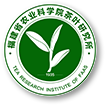Abstract:
Objective Genes associated with the photosynthesis-promoting, light harvesting chlorophyll a/b binding protein (Lhc) in tea plants were cloned to study their functions and expressions under stress.
Method CsLhca4s, the genes related to Lhc and their promoters in 'Shuchazao' and 'Longjing 43' tea cultivars were cloned. A bioinformatic analysis combined with transcriptome data was conducted to determine the expression pattern of the genes under stress and their upstream promoter cis-acting elements. Functions of the genes were analyzed.
Result CsLhca4s were cloned from the tea cultivars. They were stable, hydrophobic proteins encoding 252 amino acids at a length of 759 bp. With a similarity of 99.6%, the two proteins differed only on the 5th codon of Shuchazao that encoded alanine (Ala) and threonine (Thr) of 'Longjing 43'. Localized in chloroplasts, CsLhca4s had a secondary structure containing mainly alpha helixes and random coils. The transcriptomes of the genes showed high expression in the leaves followed by the stems but low in the flowers and fruits, and almost none in the roots. The gene expressions were affected by light exposure that declined in 4-8h under shading. They also responded to stress under drought, salt or MEJA treatment. The CsLhca4 promoters contained cis-acting elements involved in the responses to light and hormones as well as the regulation of cellular cycles.
Conclusion The CsLhca4s of 'Shuchazao' and 'Longjing 43' tea cultivars were tissue-specific that basically expressed in photosynthetic organs. They responded to drought and salt stresses, thus could be a candidate for application in breeding resistant varieties.




 下载:
下载: